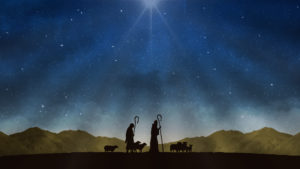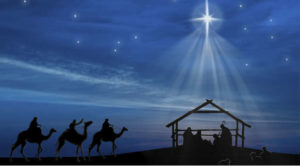This Christmas season, we invite everyone to reread and reconsider the Nativity story (Matthew 1:18-24; Luke 1:26-38, 2:1-20) from a fresh perspective. Since Christians are familiar with the birth narratives, we can sometimes take them for granted, missing key truths. So, take a few extra minutes this year, reread these amazing accounts and marvel at the lessons they reveal about God and our Savior, Jesus. Continue reading
Category Archives: Alleged Biblical Errors
Articles addressing alleged historical errors in the Bible, with a particular focus on the New Testament
The Virgin Birth: Invented, Copied, or the Real Deal?
As Christmas approaches, Christians around the world celebrate the birth of Jesus. While Christmas is typically thought of as a time of rejoicing and being with family, there is one aspect of Jesus’ birth that brings ridicule from some.
“I no more believe that Jesus was born of the virgin Mary than I believe that Krishna was born of the virgin Devaka, Horus was born of the virgin Isis, Mercury was born of the virgin Maia or Romulus was born of the virgin Rhea Sylvia… Christianity insults our intelligence as well as our innate morality by insisting that we believe absurdities that are drawn from the mythology of paganism and barbarism.”1
Christopher Hitchens
The Virgin Birth is an important Christian doctrine. But is it actually true? Or did Christians simply borrow it from other, pagan myths and use it as their own? As we head into the Christmas holiday, let’s take a look and find out. Continue reading
The “Busted” Series Links Page
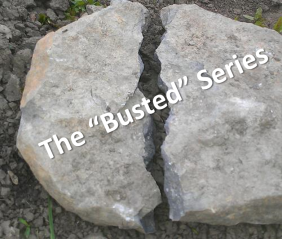 Recently a Logic & Light reader asked if there was one place from which they could access the entire “Busted” article series. In response to that request, we pulled together this page. It provides links to all 14 articles in the series.
Recently a Logic & Light reader asked if there was one place from which they could access the entire “Busted” article series. In response to that request, we pulled together this page. It provides links to all 14 articles in the series.
For those who aren’t familiar with this series, here’s a quick overview. Critics are fond of saying that the Gospels are full of obvious errors that render them unreliable as historical documents. They ask, “If Luke (or John or Matthew or Mark) can’t get their basic facts straight, then how can we rely on them for huge claims like Jesus’ resurrection?” Continue reading
NT Textual Variations and Why They’re Not a Big Deal
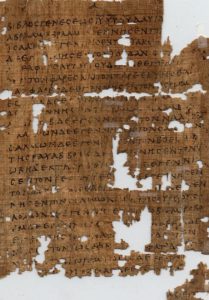
Fragment of the Gospel According to Matthew (original autograph: ~60-70 A.D.); This is a copy dating to ~250 A.D. (Wikimedia Commons)
In a 2013 article entitled, Is the New Testament Text Reliable?, Greg Koukl tacked the old assertion that the New Testament has been copied and recopied so many times over the ages that today, we can’t even know what the original texts said. To kick off that article, Koukl used a great example of how this meme continues to be perpetuated:
In the spring of 1989 syndicated talk show host Larry King interviewed Shirley MacLaine on the New Age. When a Christian caller contested her view with an appeal to the New Testament, MacLaine brushed him off with the objection that the Bible has been changed and translated so many times over the last 2000 years that it’s impossible to have any confidence in its accuracy. King was quick to endorse her “facts.” “Everyone knows that,” he grunted.
Busted (14): Mark’s “Error” Regarding Jewish Handwashing Rituals
 Critics are fond of claiming that the gospels are full of historical errors, and that they are therefore unreliable as historical documents. Today’s article focuses on an alleged error in Mark’s gospel. Let’s get started by allowing biblical scholar, Bart Ehrman, to enlighten us regarding Mark’s ineptitude as an historian:
Critics are fond of claiming that the gospels are full of historical errors, and that they are therefore unreliable as historical documents. Today’s article focuses on an alleged error in Mark’s gospel. Let’s get started by allowing biblical scholar, Bart Ehrman, to enlighten us regarding Mark’s ineptitude as an historian:
Mark 7:3 indicates that the Pharisees ‘and all the Jews’ washed their hands before eating, so as to observe ‘the tradition of the elders.’ This is not true: most Jews did not engage in this ritual.1
Busted (13): On Mark’s (& Matthew’s) Geographical Ineptitude
![]() In this short article, we tackle yet another alleged error in the Gospel of Mark (and address the same “error” in Matthew’s gospel, as well). Let’s dive right in by reading the first verse in question, Mark 10:1 (NIV):
In this short article, we tackle yet another alleged error in the Gospel of Mark (and address the same “error” in Matthew’s gospel, as well). Let’s dive right in by reading the first verse in question, Mark 10:1 (NIV):
Jesus then left that place [Capernaum, in Galilee] and went into the region of Judea and across the Jordan. Again crowds of people came to him, and as was his custom, he taught them.
Some critics have argued that this verse contains a geographical error because it says that Jesus went from Capernaum, across the Jordan, and into Judea. That’s impossible, we are told, because Judea is not actually across the Jordan river from Capernaum…They’re both on the same side of the river. Continue reading
Busted (11): The Nazareth Myth
To some people, the very idea of Jesus is apparently so threatening, that they will go to great lengths to pretend he never even existed. Some of the shoddiest biblical “scholarship” I have ever read defends the so-called “Jesus Myth” theory: The idea that Jesus never existed—or that he was just a normal guy around whom great myths were developed after his death. From Richard Carrier to Acharya S (a pseudonym for author Dorothy Murdock, apparently meaning “guru”), we get treated to numerous varieties of the Jesus myth. One element of the Jesus myth is the idea that Nazareth, Jesus’ home town, did not exist in his day. As this fringe argument goes: Nazareth didn’t exist, and so Jesus didn’t either. As evidence, they tell us that Nazareth is not mentioned in the Old Testament, the Talmud, or in other early rabbinic literature. Continue reading
Busted (10): Mark’s Bad Geography?
Throughout our ongoing Busted series, we’ve been exploring critics’ claims that the gospels are full of historical and geographical errors, and are therefore untrustworthy sources of information. So far, the gospel writers are coming out looking pretty good.
In today’s short article, we tackle a totally nit-picky, never-should-have-been-made accusation against Mark. The verse in Question is Mark 11:1 (ESV): Continue reading
Busted (9): The Census
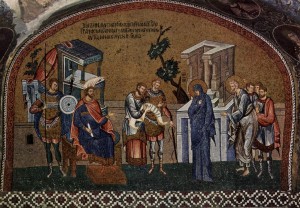
Byzantine Mosaic (c. 1315) showing Joseph and Mary registering for the census before Quirinius. This demonstrates a common misunderstanding of what Luke’s text intended to communicate. Source: Wikimedia Commons.
As I write this article, Christmas is just a few days away. So, it’s only fitting that we study a part of the Christmas story that critics love to attack: The census. According to Luke’s gospel, Joseph and a very pregnant Mary travelled from Nazareth to Joseph’s home town of Bethlehem to be “registered” as part of a census decreed by Caesar Augustus. Here is the relevant passage, Luke 2:1-3 (ESV): Continue reading
Busted (8): The Question of Jesus and the Demoniac
 The story of Jesus and the demoniac, as told in Mark 5, Matthew 8, and Luke 8 is a familiar one in which Jesus encounters a man possessed by a large number of demons. After a brief conversation, Jesus commands the “legion” to leave the man and enter a herd of nearby pigs. These pigs then rush down a steep incline and drown in the sea below.
The story of Jesus and the demoniac, as told in Mark 5, Matthew 8, and Luke 8 is a familiar one in which Jesus encounters a man possessed by a large number of demons. After a brief conversation, Jesus commands the “legion” to leave the man and enter a herd of nearby pigs. These pigs then rush down a steep incline and drown in the sea below.
To Bible critics, this story is a potential gold mine. Across these parallel accounts, they claim, we have both historical error and contradiction that clearly prove the Bible is neither inerrant nor even reliable. Continue reading

